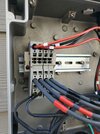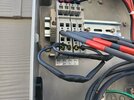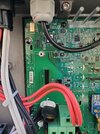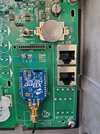ok. so you have a system designed by Tesla/Solar City where 3 PV strings output greater than 12A per string persistently for up to 4hrs recently (to be precise 12.5A), and an 8kW inverter that accepts no more than 12A per input string and persitently faults and resets in an oscillatory fashion when >12A (as designed for safety purposes), and very little power gets produced. Hmmm ... please enlighten me further thanks.
This does not necessarily mean that he is correct (its waay above my knowledge level) but @nwdiver works in the PV industry.







